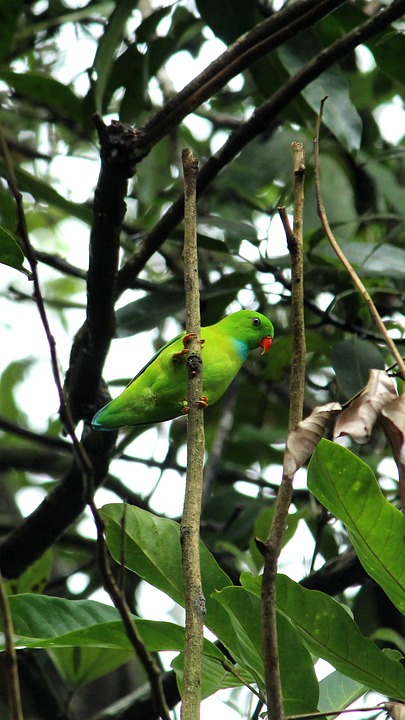Parrots are intelligent and social creatures that can become aggressive towards strangers if not properly trained and socialized. In this article, we will explore effective strategies to discourage aggressive behavior in parrots and create a harmonious environment for both your feathered friend and visitors. Additionally, we will address frequently asked questions related to parrot behavior.
Understanding Aggression in Parrots
A. The reasons behind aggression
Parrots may display aggressive behavior due to various reasons, including fear, territoriality, hormonal changes, or past traumatic experiences. It is essential to identify the underlying cause of aggression to address it effectively.
B. Common signs of aggression in parrots
Some common signs of aggression in parrots include lunging, biting, vocalizing loudly, fluffing their feathers, or displaying aggressive postures. Recognizing these signs can help intervene before the situation escalates.
C. Identifying triggers for aggressive behavior
Certain triggers, such as sudden movements, loud noises, or unfamiliar individuals, can provoke aggression in parrots. Understanding these triggers can help manage and prevent aggressive episodes.
Strategies to Discourage Aggression towards Strangers
A. Positive reinforcement training
1. Reward-based training techniques: Using positive reinforcement, such as treats or praise, can encourage desired behaviors and discourage aggression.
2. Clicker training for positive associations: Associating the sound of a clicker with rewards can help parrots develop positive associations with strangers and reduce aggression.
B. Gradual exposure and desensitization
1. Introducing strangers in a controlled environment: Initially, introduce strangers to your parrot in a calm, controlled environment where the bird feels safe.
2. Gradually increasing the exposure to unfamiliar individuals: Slowly expose your parrot to different people, gradually increasing the duration and proximity over time to desensitize them to strangers.
C. Enrichment and mental stimulation
1. Providing engaging toys and activities: Offering stimulating toys and activities can redirect your parrot’s aggression towards interactive playtime, reducing their focus on strangers.
2. Encouraging foraging behavior to redirect aggression: Implementing foraging activities, such as hiding treats or food in puzzles, can redirect your parrot’s energy and aggression towards finding rewards.
D. Consistency and routine
1. Establishing a structured daily routine: Creating a predictable daily routine can help alleviate stress and provide a sense of security for your parrot, reducing the likelihood of aggressive behavior.
2. Maintaining consistent training methods and expectations: Consistency in training methods and expectations reinforces positive behaviors and helps your parrot understand the boundaries.
Creating a Parrot-friendly Environment
A. Safe and secure housing
1. Adequate cage size and placement: Providing a spacious cage and placing it in a secure, quiet location can help your parrot feel safe and reduce stress.
2. Providing hiding spots and perches: Offering hiding spots, such as covered areas or perches, allows your parrot to retreat when feeling overwhelmed or threatened.
B. Minimizing stress factors
1. Avoiding loud noises and sudden movements: Loud noises and sudden movements can startle and stress your parrot, potentially triggering aggression. Minimize these factors in their environment.
2. Maintaining a calm and predictable household: A calm and predictable household environment, with consistent routines and minimal disruptions, can help reduce stress and promote positive behavior.
C. Encouraging positive socialization
1. Regular exposure to different individuals and environments: Exposing your parrot to various people, animals, and environments from a young age can help them become more comfortable with strangers.
2. Promoting positive interactions with trusted visitors: Encouraging positive interactions between your parrot and trusted visitors, such as family and friends, can help build trust and reduce aggression towards strangers.
Addressing Frequently Asked Questions (FAQs)
1. How long does it take to train a parrot to be less aggressive towards strangers?
The time it takes to train a parrot to be less aggressive towards strangers varies depending on the individual bird, their past experiences, and the consistency of training efforts. It can take weeks to months of consistent training to see significant improvements.
2. Can neutering or spaying a parrot help reduce aggression?
Neutering or spaying a parrot can help reduce certain hormonal behaviors and aggression, but it is not a guaranteed solution. Consult with a veterinarian to determine if this option is appropriate for your parrot.
3. Are certain parrot species more prone to aggression towards strangers?
Some parrot species, such as African Grey parrots or Amazon parrots, may have a higher propensity for aggression towards strangers. However, individual personalities and past experiences play a significant role in determining aggression levels.
4. What should I do if my parrot shows aggressive behavior despite training efforts?
If your parrot continues to display aggressive behavior despite training efforts, it is crucial to consult with a avian behavior specialist or veterinarian experienced in parrot behavior. They can provide tailored advice and guidance to address the specific needs of your parrot.
5. Can professional help be sought to address aggression in parrots?
Yes, seeking professional help from an avian behavior specialist or veterinarian experienced in parrot behavior can be beneficial in addressing aggression. They can assess the situation, provide guidance, and develop a customized behavior modification plan for your parrot.
Conclusion
By understanding the reasons behind parrot aggression and implementing the strategies discussed in this article, you can effectively discourage aggressive behavior towards strangers. Remember, patience, consistency, and positive reinforcement are key when training your parrot. With time and effort, you can create a safe and harmonious environment for both your parrot and visitors.









